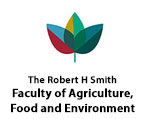Citation:
Abstract:
Bacterial fruit blotch (BFB) caused by Acidovorax citrulli is one of the most important bacterial diseases of cucurbits worldwide. However, the mechanisms associated with A. citrulli pathogenicity and genetics of host resistance have not been extensively investigated. We idenitfied Nicotiana benthamiana and Nicotiana tabacum as surrogate hosts for studying A. citrulli pathogenicity and non-host resistance triggered by type III secreted (T3S) effectors. Two A. citrulli strains, M6 and AAC00-1, that represent the two major groups amongst A. citrulli populations, induced disease symptoms on N. benthamiana, but triggered a hypersensitive response (HR) on N. tabacum plants. Transient expression of 19 T3S effectors from A. citrulli in N. benthamiana leaves revealed that three effectors, Aave_1548, Aave_2708, and Aave_2166, trigger water-soaking-like cell death in N. benthamiana. Aave_1548 knockout mutants of M6 and AAC00-1 displayed reduced virulence on N. benthamiana and melon (Cucumis melo L.). Transient expression of Aave_1548 and Aave_2166 effectors triggered a non-host HR in N. tabacum, which was dependent on the functionality of the immune signalling component, NtSGT1. Hence, employing Nicotiana species as surrogate hosts for studying A. citrulli pathogenicity may help characterize the function of A. citrulli T3S effectors and facilitate the development of new strategies for BFB management. © 2019 The Authors. Molecular Plant Pathology Published by British Society for Plant Pathology and John Wiley & Sons Ltd

